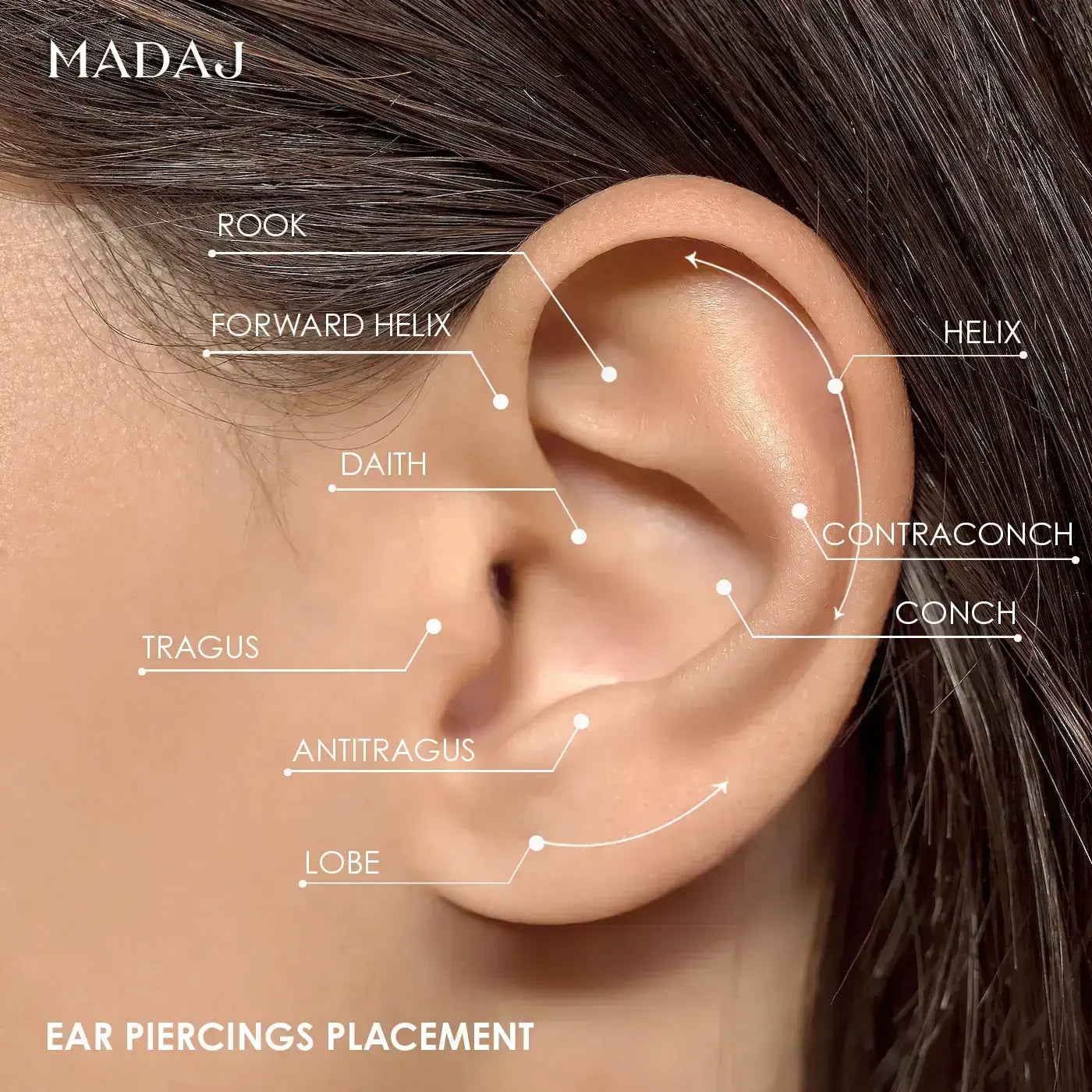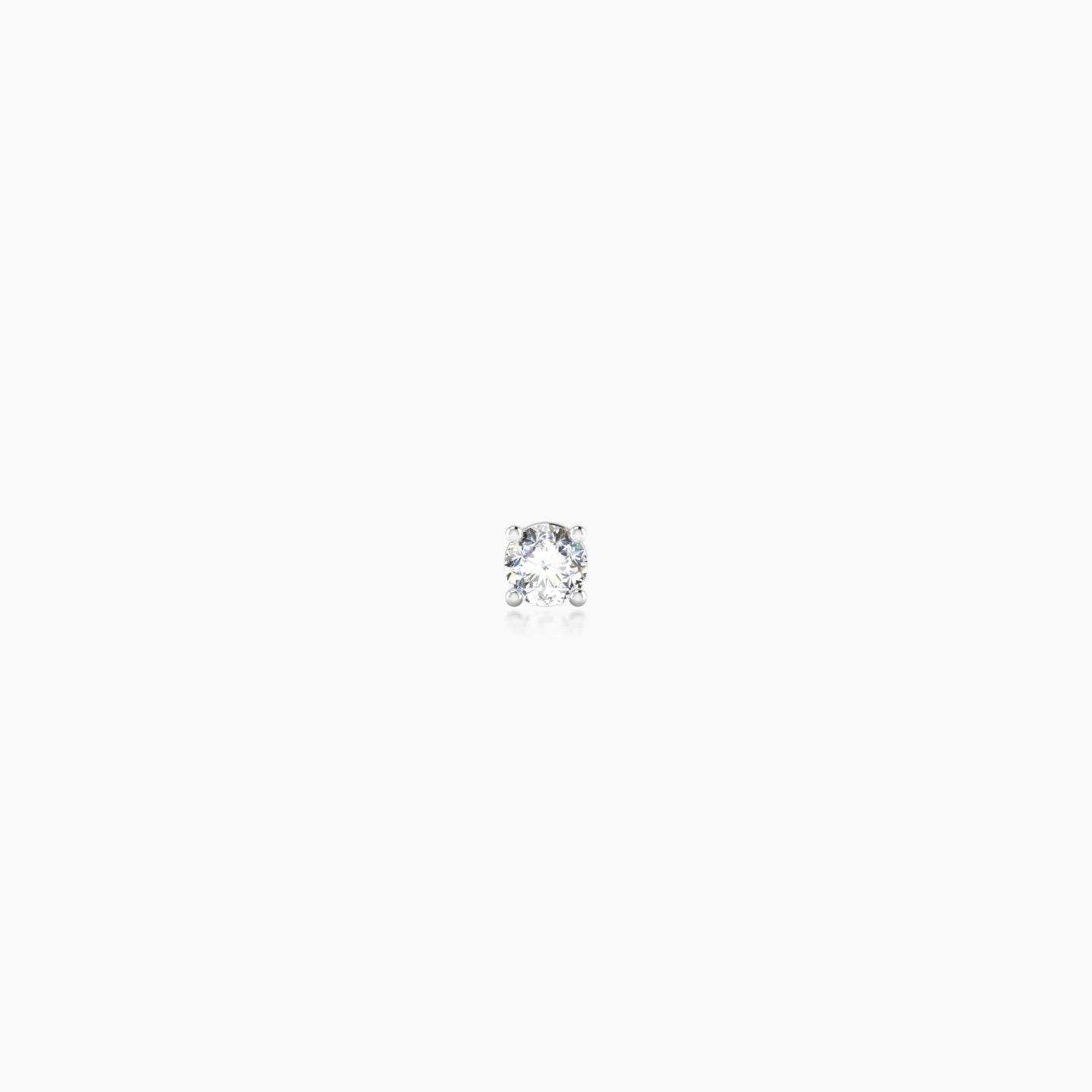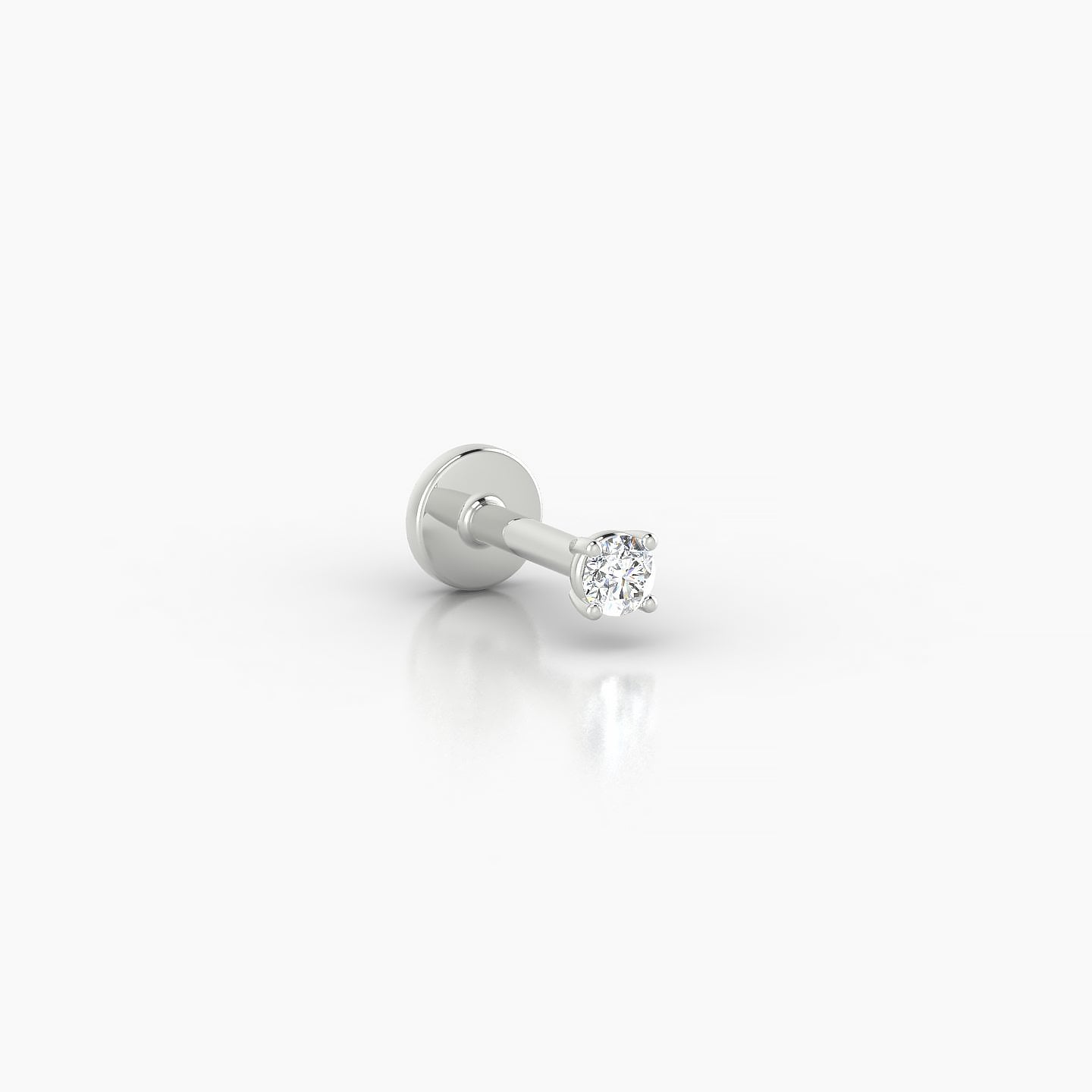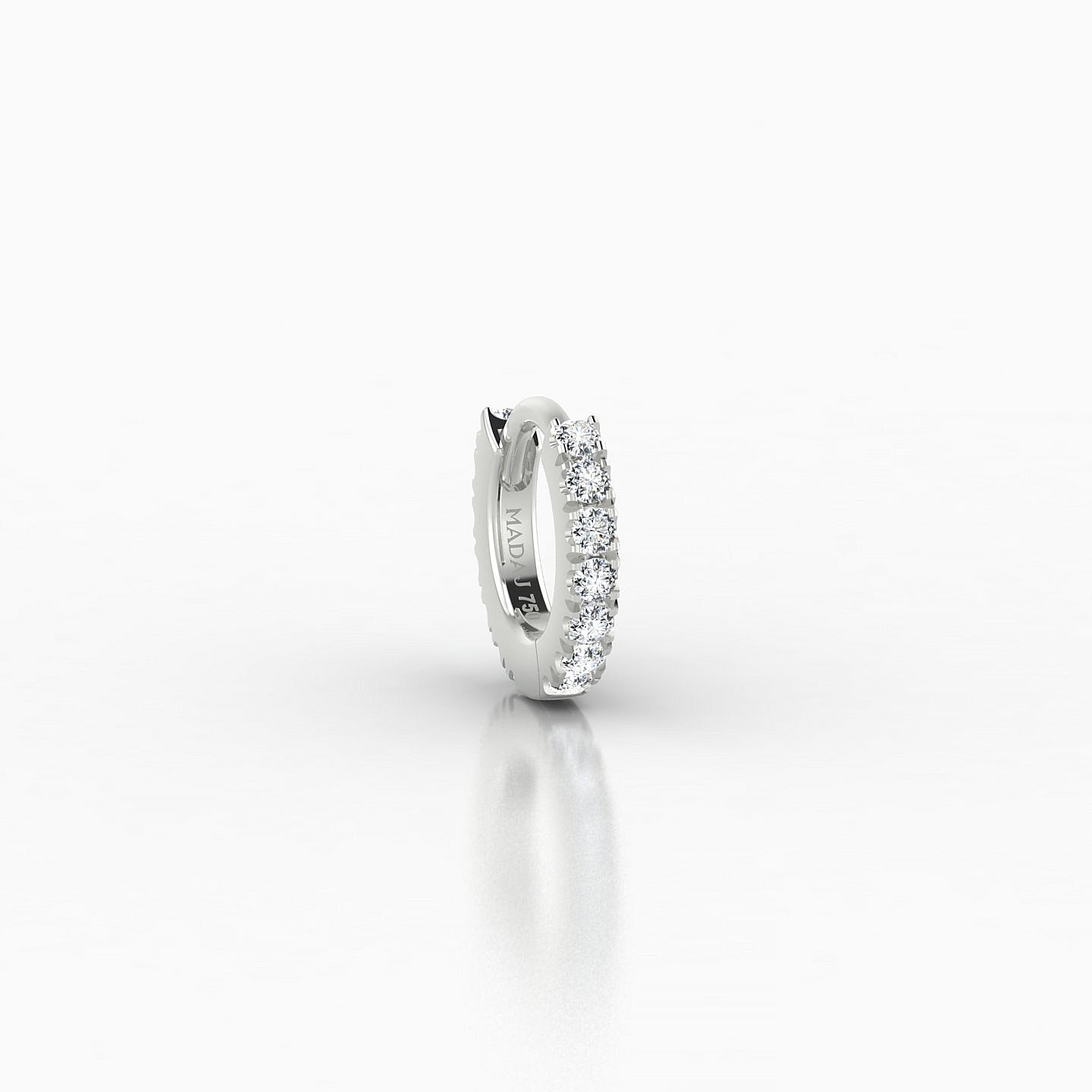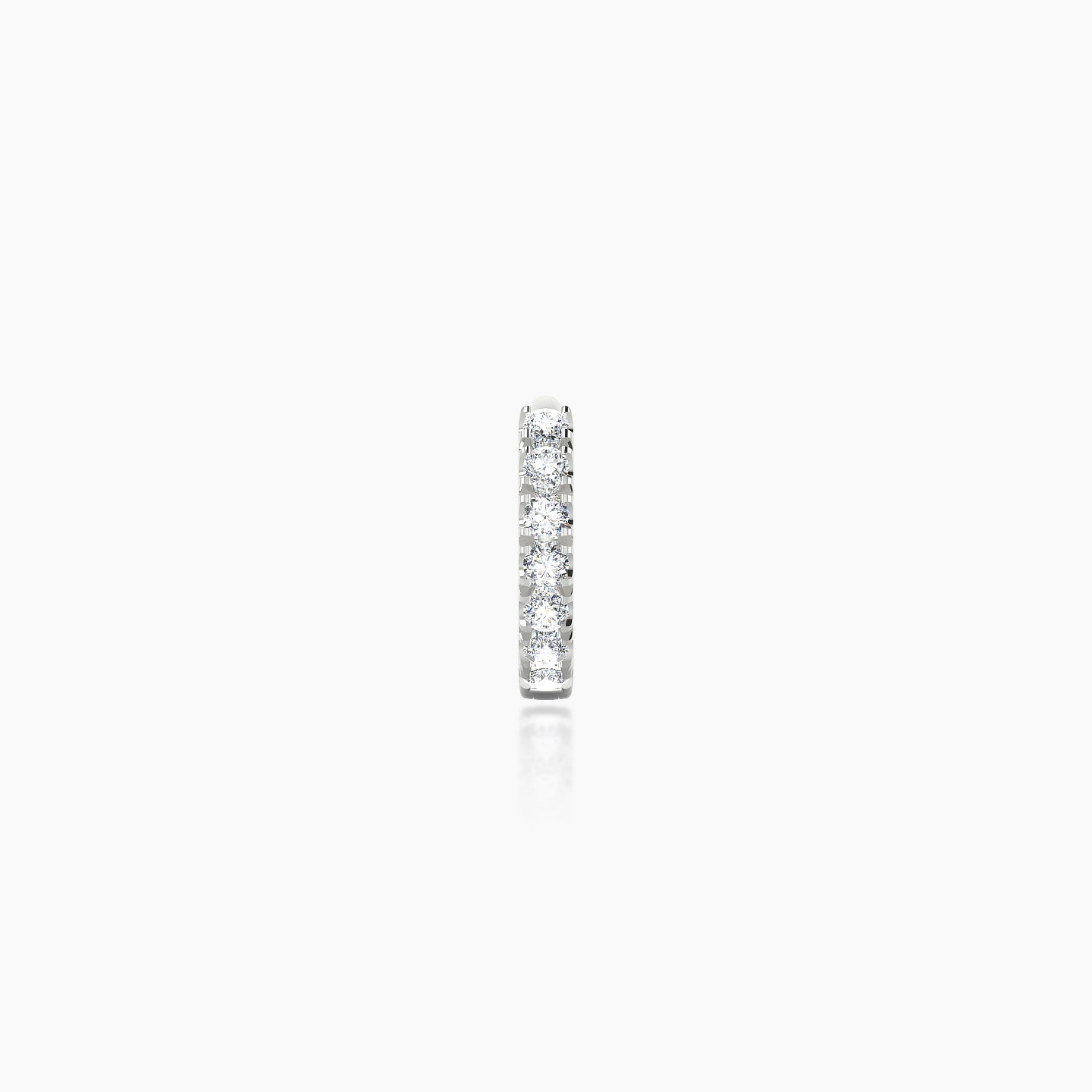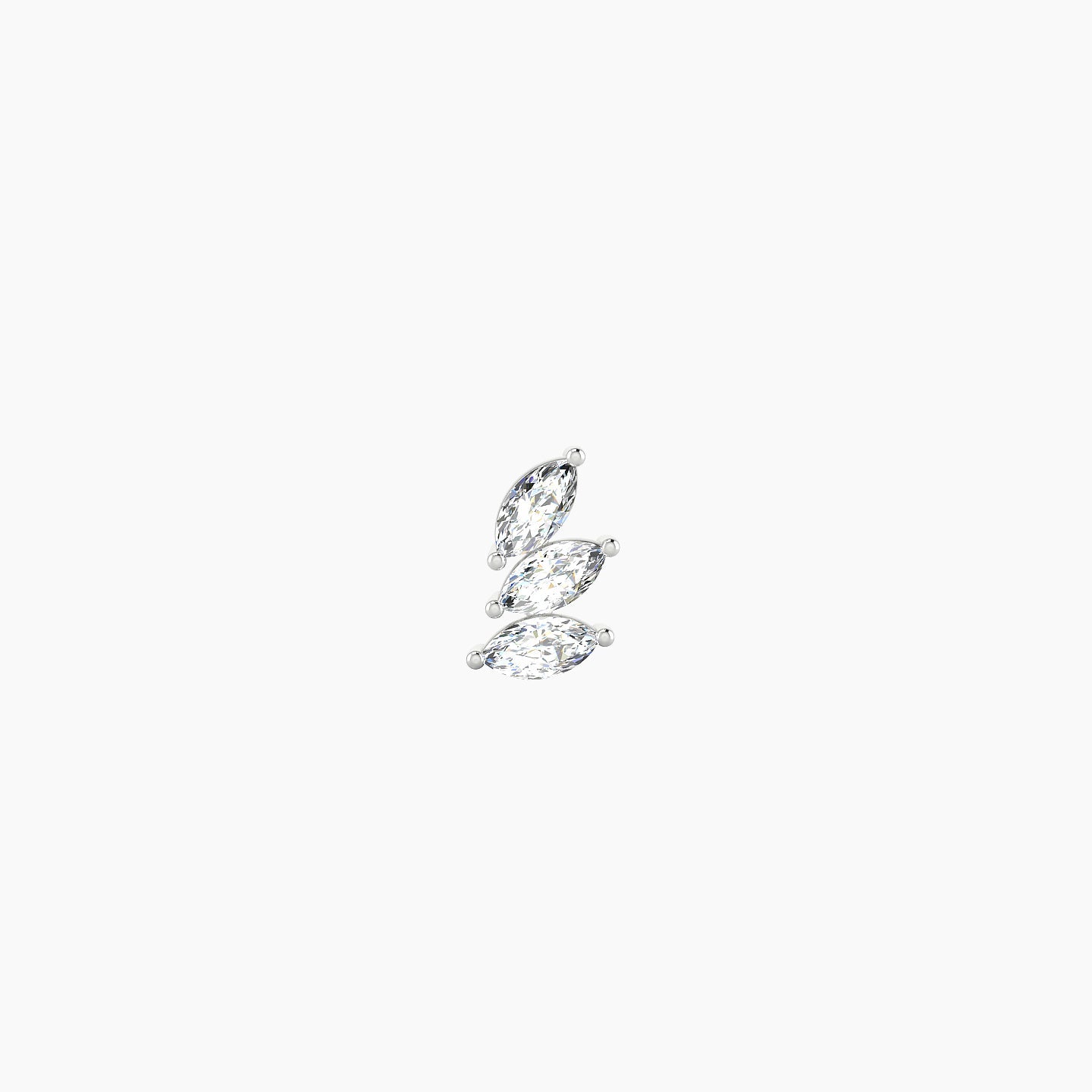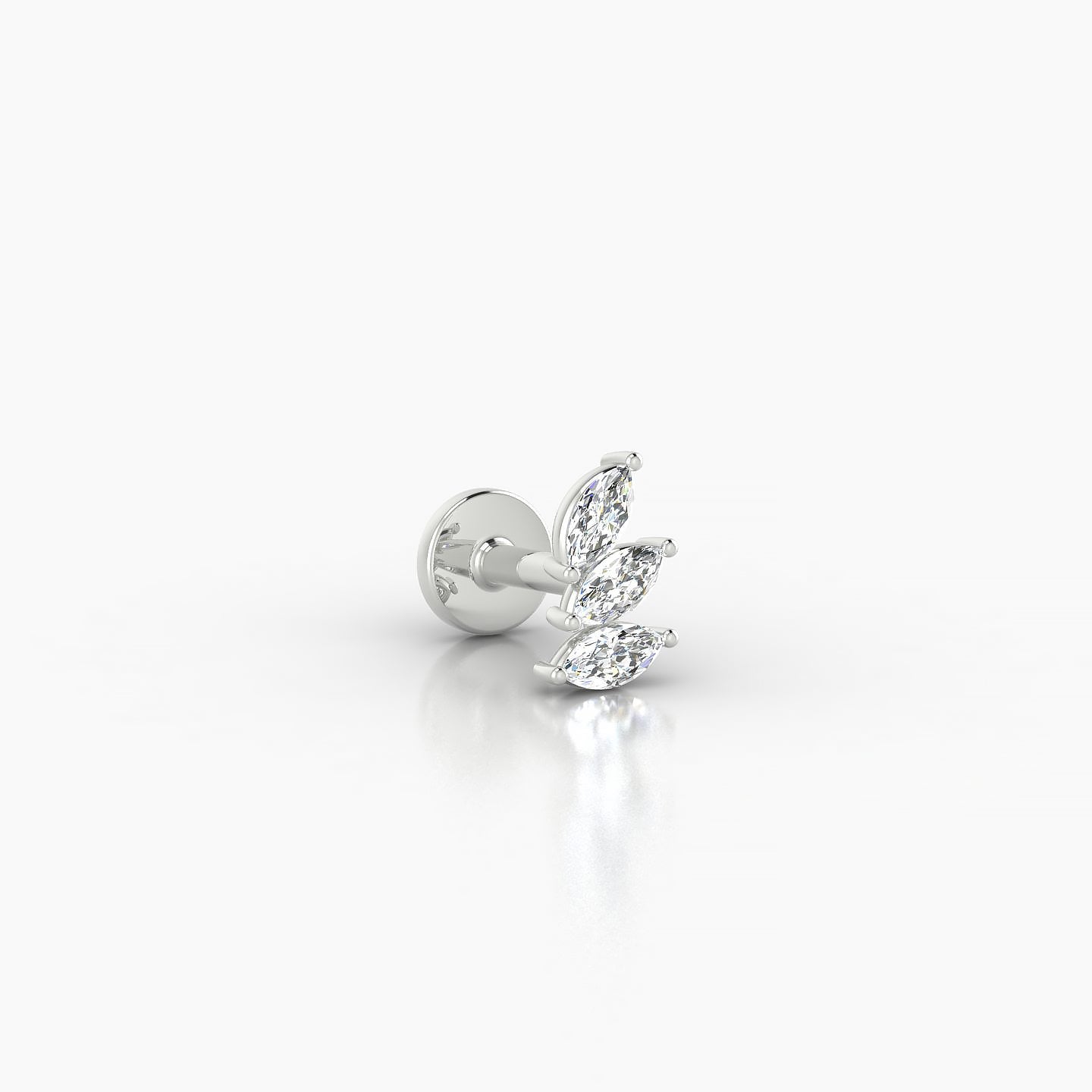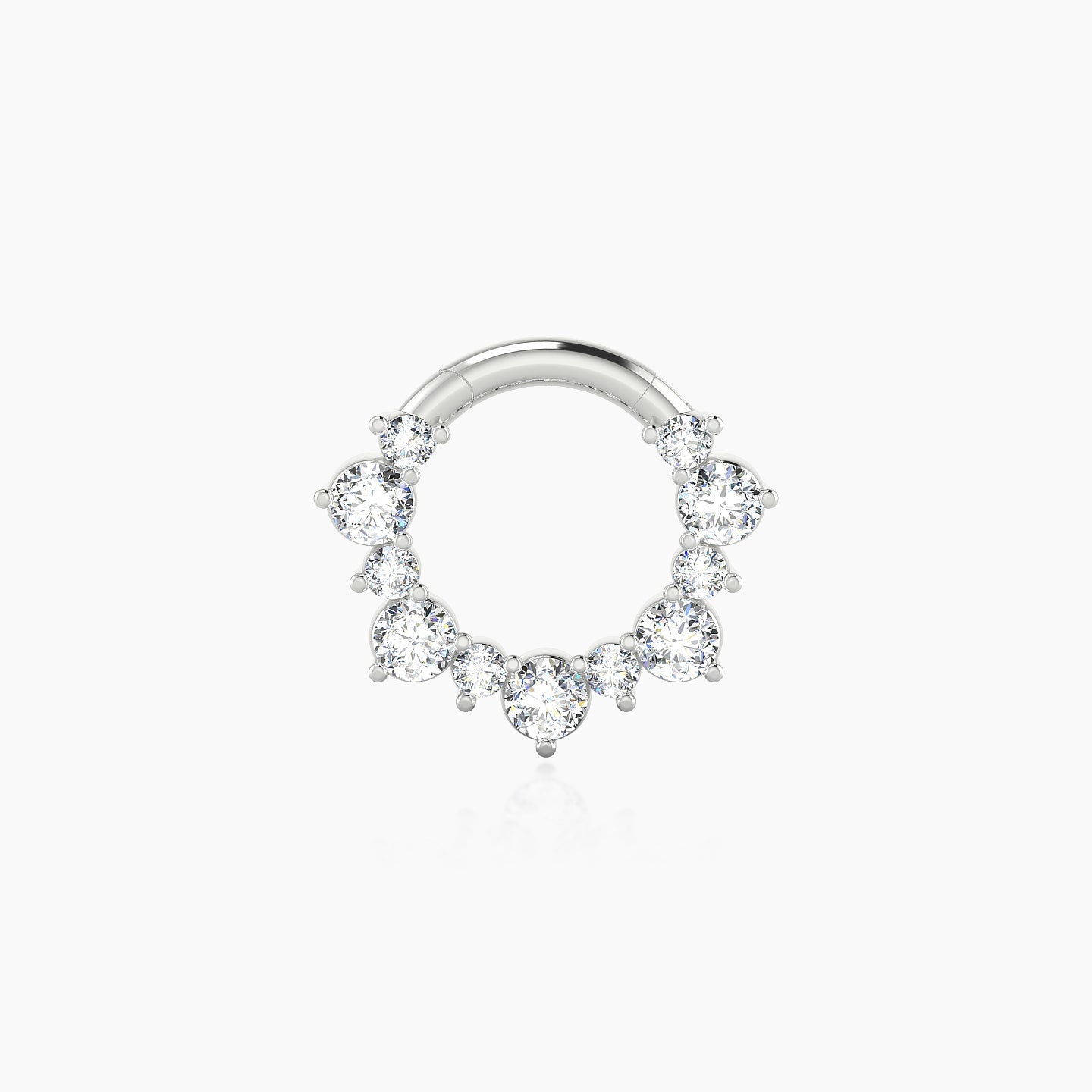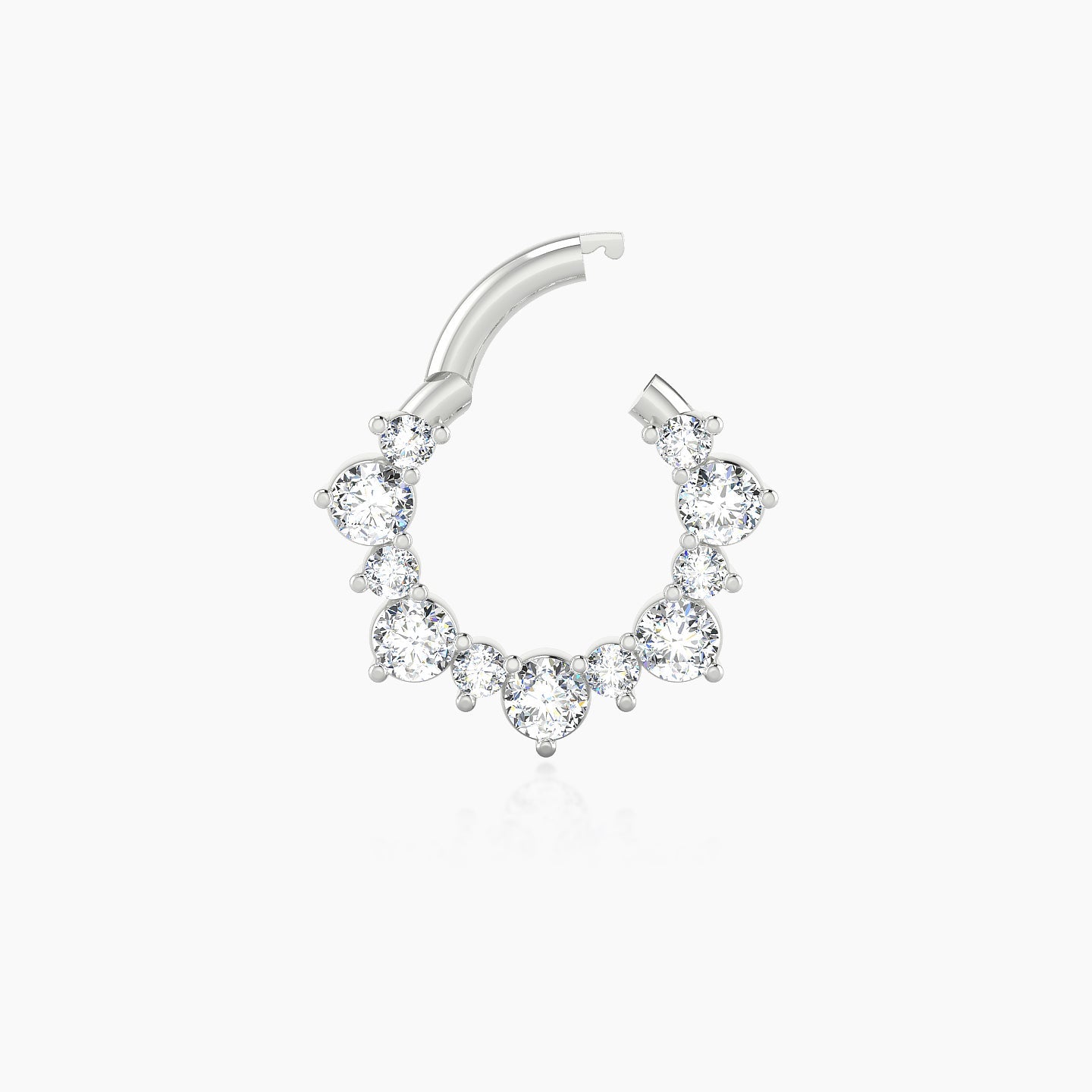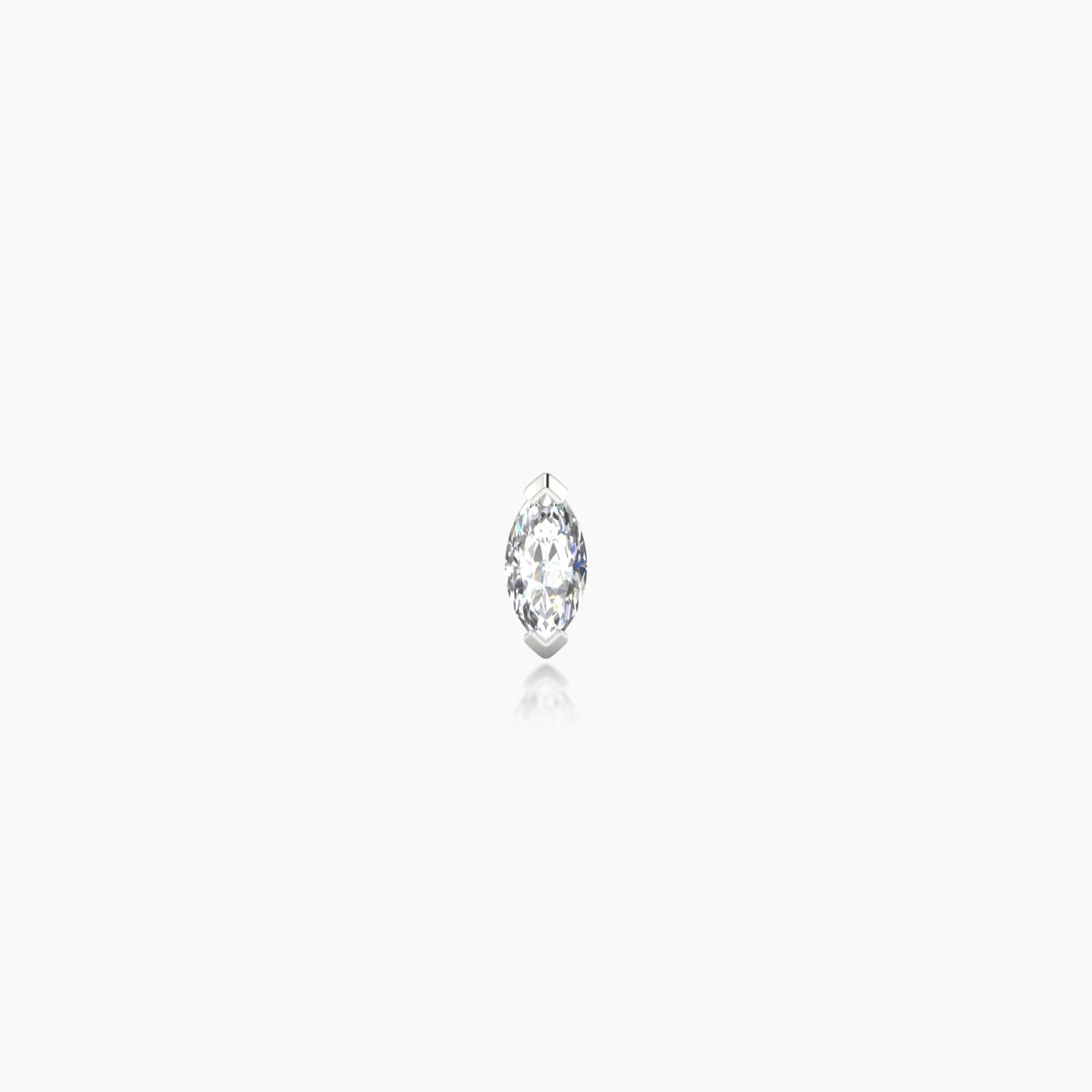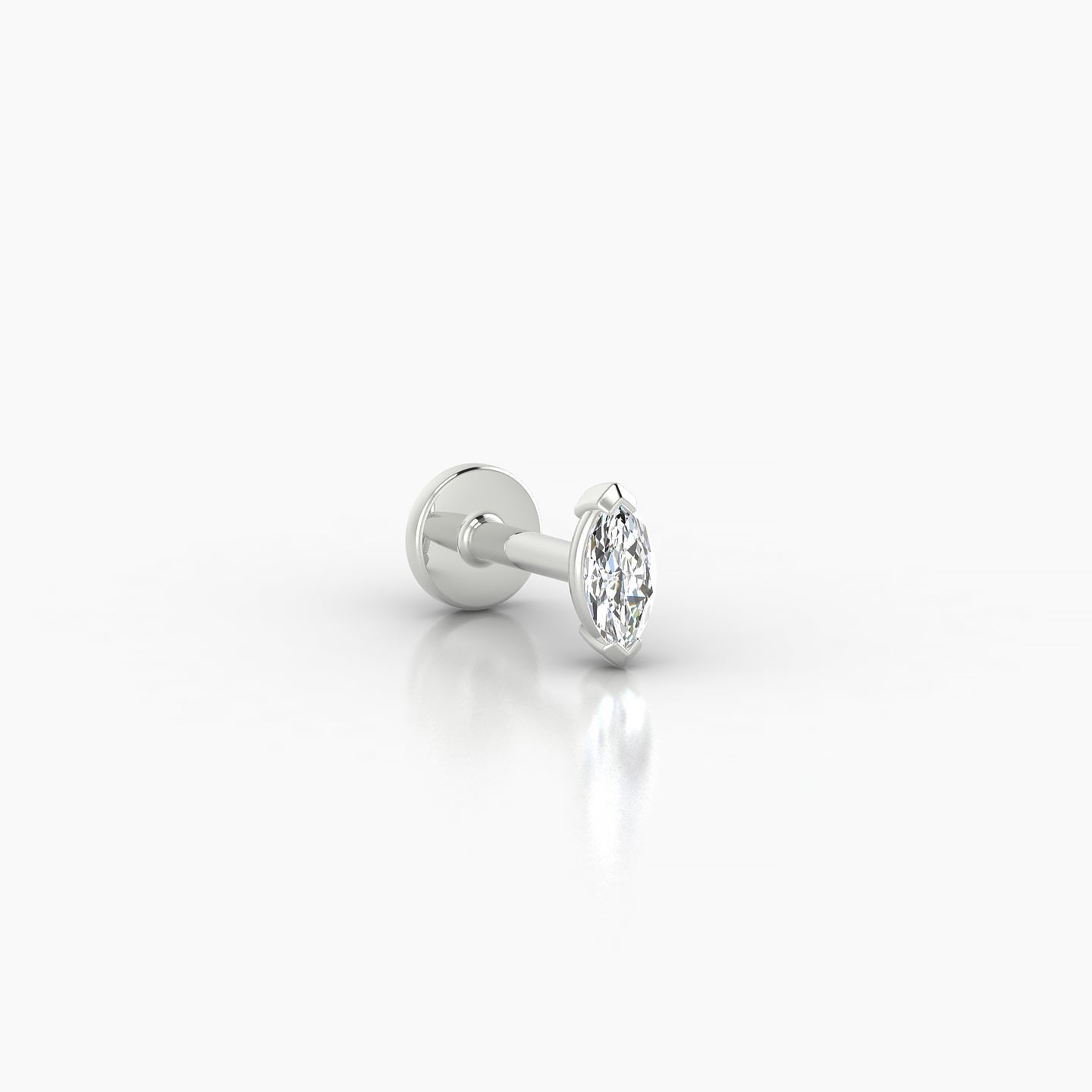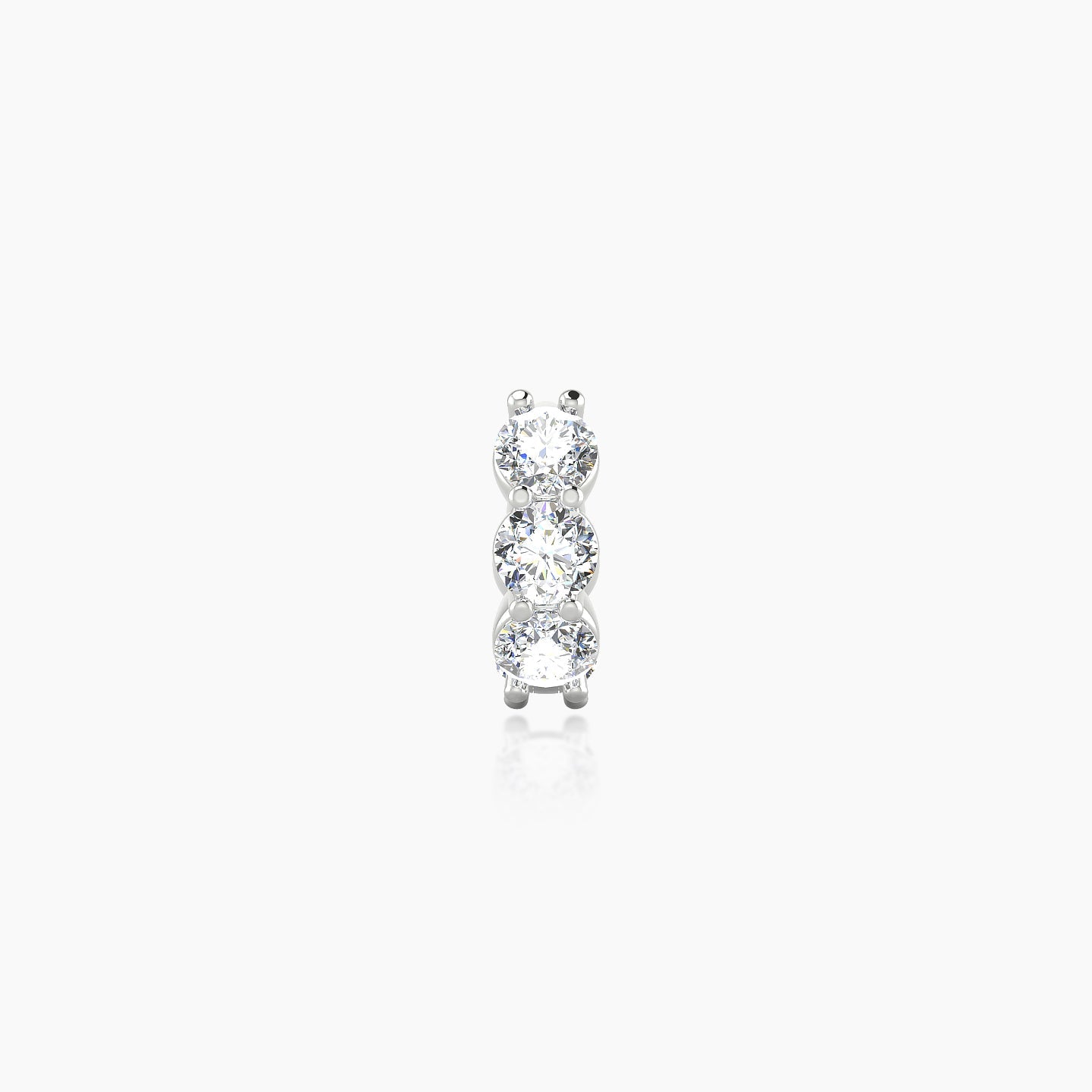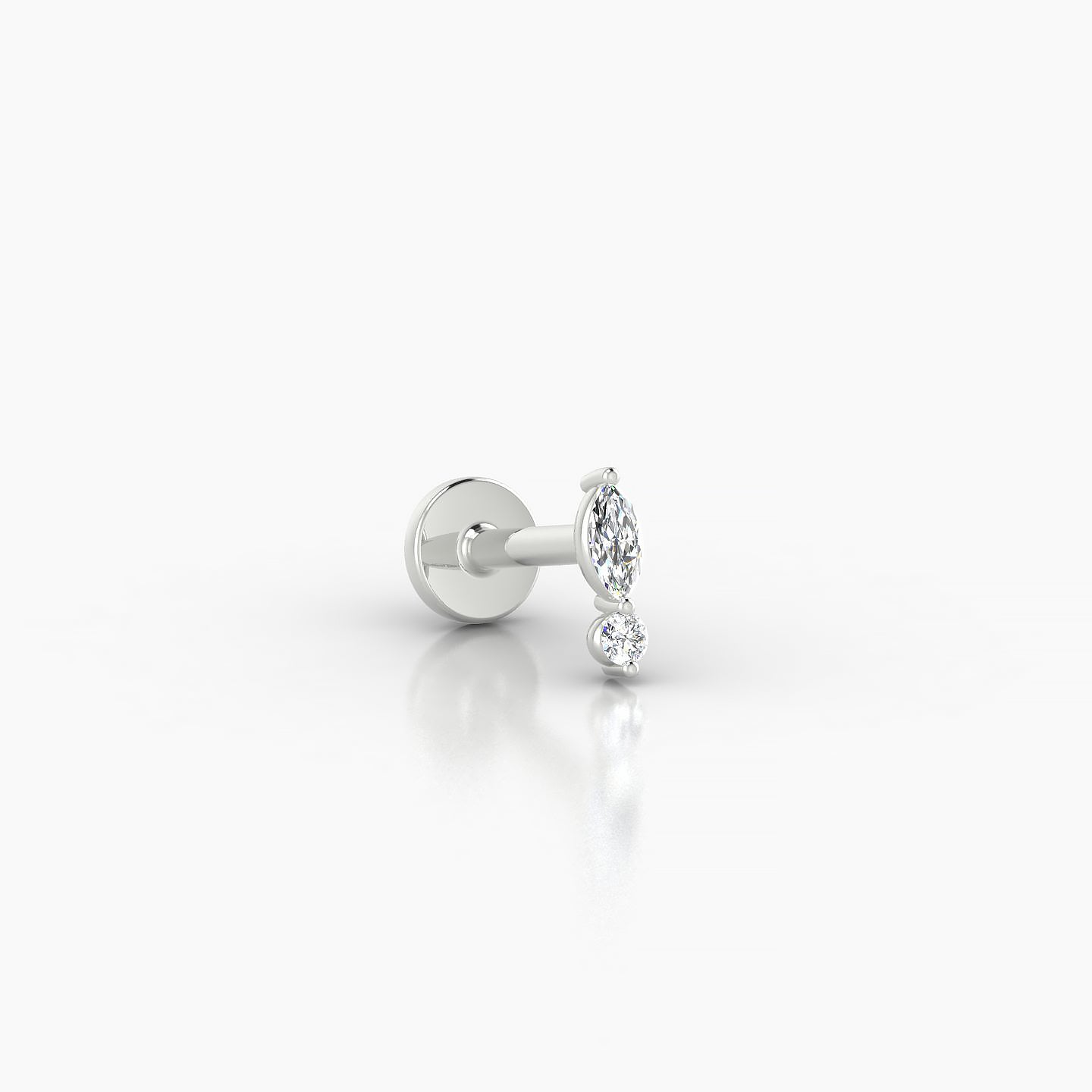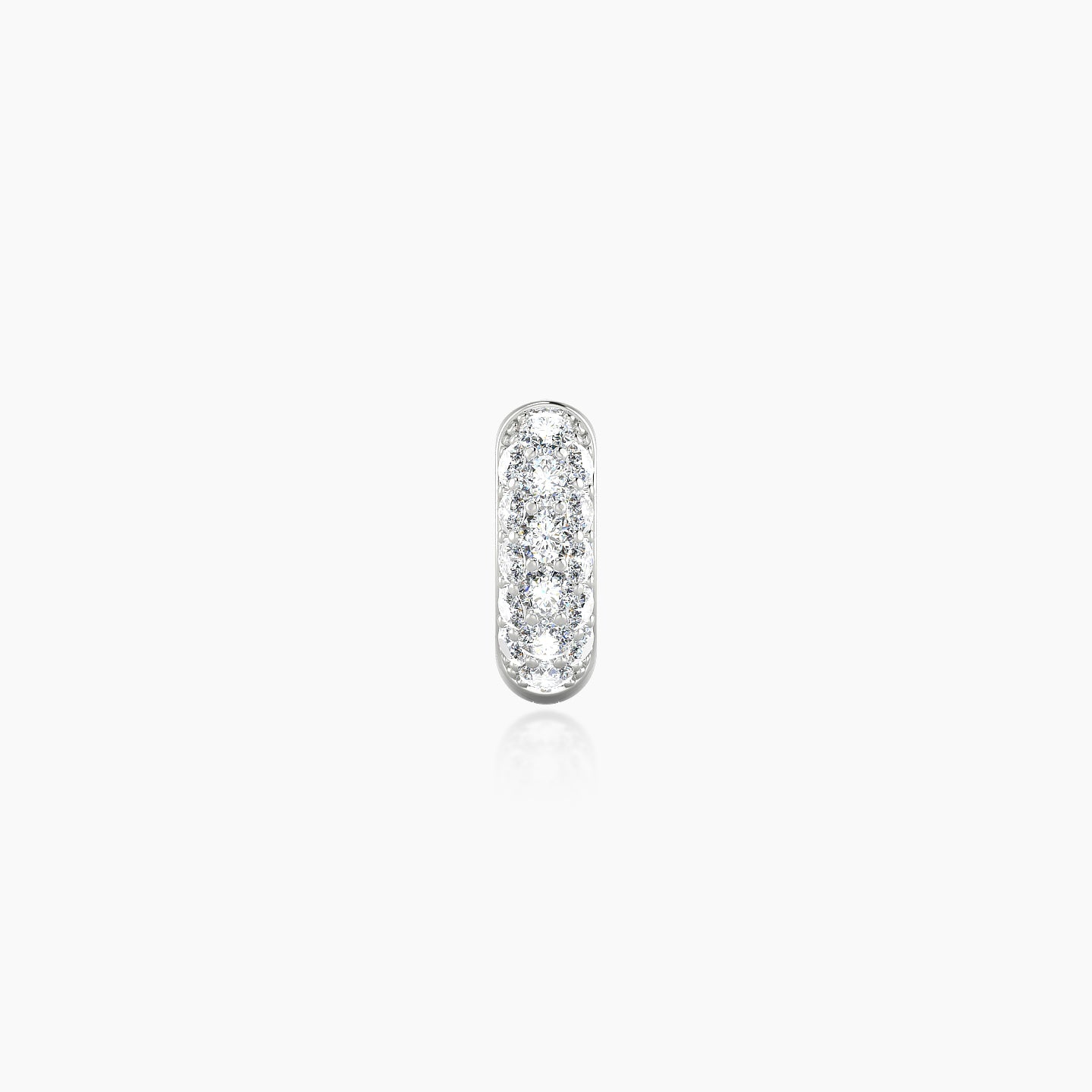EDUCATION
DIAMOND FULL GUIDE
At MADAJ, we apply strict gemological standards to every diamond used in our custom-made piercings.
Understanding the 4Cs—Color, Clarity, Cut, and Carat Weight—will help you appreciate the unique quality of each piece.
WHAT'S THE 4CS ?
Similar to how each human fingerprint is unique, every diamond also has its own distinct attributes.
The four key criteria :
Color, Clarity, Cut, and Carat weight, collectively known as the 4Cs are the universally acknowledged measures for appraising a diamond's quality.
Color
The value of a diamond rises with the decrease in observable color, meaning that the most valuable diamonds are those closest to being colorless.
Clarity
In the world of gemology, "clarity" is a term used to describe the absence or presence of flaws, called inclusions and blemishes, within or on the surface of a diamond.
Carat Weight
The weight of diamonds is quantified in metric carats, abbreviated as "ct" with one carat equaling 0.2 grams or 200 milligrams.
Cut
The cut of a diamond not only dictates its shape but also its brilliance and sparkle. A well-cut diamond has the power to exhibit remarkable brilliance.

DIAMOND COLOR
The Hue of Purity
Diamond color is graded from D (absolutely colorless) to Z (noticeable yellow or brown tint). The GIA Color Scale is the global standard:
- D - F: Colorless — Exceptional quality, especially for minimalist piercing designs where brilliance is key.
- G - J: Near Colorless — Subtle warmth that pairs beautifully with yellow gold settings.
- K - M : Faint Color — Not typically used in MADAJ piercings unless part of a custom aesthetic choice.
Piercing relevance: Because our diamond piercings are often small and viewed up-close, we prioritize near-colorless (G+ range) diamonds that maintain brilliance in compact cuts.

DIAMOND CLARITY
Clarity measures the presence of inclusions (internal) and blemishes (external) under 10x magnification. GIA’s 11-grade scale includes:
- IF (Internally Flawless): No inclusions visible under 10x—ultra rare.
- VVS1 – VVS2 (Very Very Slight Inclusions): Minute inclusions, nearly invisible.
- VS1 – VS2 (Very Slight Inclusions): Minor inclusions, excellent for fine piercings.
- SI1 – SI2 (Slight Inclusions): Some visibility under magnification, still eye-clean in smaller stones.
MADAJ standard: We typically use VS+ diamonds to ensure clarity in even the most petite piercing settings. Lower grades may impact the diamond’s visual purity, especially under strong lighting.

DIAMOND CUT
The Architecture of Light
The cut is the most critical factor in determining brilliance. It refers not to shape (e.g., round, pear, marquise) but to how well a diamond’s facets interact with light. GIA grades cut for round brilliants from Excellent to Poor, based on:
- Proportions: (table size, depth, crown and pavilion angles)
- Symmetry
- Polish
Piercing Insight: In body jewelry, cuts with high brilliance and tight symmetry (e.g., triple excellent) are essential since smaller diamonds must sparkle intensely despite reduced surface area.
We also offer fancy cuts (oval, princess, pear, marquise & baguette) that suit different piercing zones like tragus, conch, or navel.

DIAMOND CARAT WEIGHT
Diamonds are measured in metric carats (1 ct = 0.2g), subdivided into 100 points. While larger carat weights increase price, in piercings, balance and proportion are more important than size alone.
MADAJ promise: Every stone is selected for optimal spread, so your piercing appears brilliant without compromising comfort or wearability.

CERTIFIED DIAMONDS
At MADAJ, we are committed to offering only diamonds that meet the highest standards of quality and authenticity.
That’s why every piercing with diamond above 0.30 carats comes with a certificate from one of the world’s most respected gemological laboratories: GIA (Gemological Institute of America), IGI (International Gemological Institute), or HRD Antwerp.
These certificates verify the diamond’s 4Cs—Color, Clarity, Cut, and Carat—through independent and expert analysis.
Certification ensures you’re receiving a piercing with natural diamond of verified quality and ethical sourcing.

FINAL THOUGHT
At MADAJ, we believe that fine jewelry should be as intentional as it is beautiful.
By combining expert gemological standards with a deep understanding of body aesthetics, we create piercings that are both elegant and enduring. Our goal is to ensure that what you wear reflects who you are—with brilliance, integrity, and individuality.
SHOP

